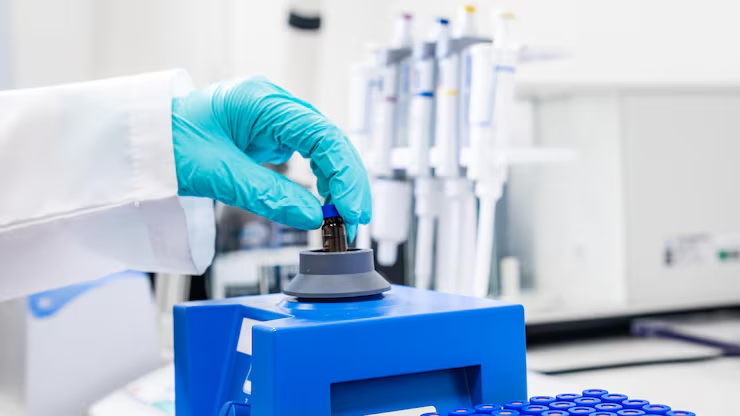High-performance liquid chromatography (HPLC) is a robust technique in analytical chemistry. HPLC testing is often employed for analyzing pharmaceutical drug products, quality assurance and quality control studies, environmental, and food testing. Specialized liquid chromatography approaches such as gel permeation chromatography, preparative HPLC, and ultrahigh-performance liquid chromatography are techniques used in routine analysis. However, the choice of methods depends on the study sample and the quantity.
For ideal HPLC performance, researchers need up-to-date instruments. Often, small laboratories may face challenges in having these specialized techniques in-house. Here, HPLC testing services play a crucial role in fulfilling these research and testing demands. This article explores the role of HPLC labs in pharmaceutical analysis.
The role of HPLC testing services in the pharmaceutical industry
HPLC assays can separate, identify, and quantify target compounds in a mixture present in a solution. During HPLC separation, researchers inject a small volume of sample into a column packed with particles, called the stationary phase. Individual elements of the study sample flow through the liquid phase of the HPLC column under pressure from the HPLC pump. The typical mobile phase flow rates in routine QA and QC analysis range between 1 and 2 mL/min. However, similar to LC-MS Method Validation and development, adequate measures for HPLC development are critical for accurate and reproducible results.
HPLC is one of the most versatile methods available for pharmaceutical and drug development scientists. Its applications span all stages of drug discovery, development, and manufacturing, ranging from basic research to rigorous manufacturing lines. Let us explore the role and applications of HPLC in the pharmaceutical industry.
The role in research and development
HPLC labs are key enablers of innovation and advances in pharmaceutical research and development. It provides the necessary flexibility and robustness to explore novel compounds, optimize their properties, and understand their behaviour. During drug discovery stages where thousands of potential compounds are screened, HPLC labs can help assess the purity of newly identified molecules. For example, after identifying or developing a new compound, HPLC assessments can confirm the purity of the target compound and ensure that subsequent testing is conducted with a purer sample. This intervention significantly streamlines the early discovery phase.
Must Read: Cell-Based Assay in Immunology and Vaccine Research
In formulation development and testing, HPLC analysis for drug products is critical. For example, HPLC assays can assess a new oral drug and its stability under environmental stresses, such as light, humidity, and temperature. By monitoring the degradation process over time, drug developers can optimize packaging and formulation to ensure a longer shelf life. For instance, a stability assessment may show that a specific excipient accelerates the degradation process. Here, drug developers can then switch to a better and more compatible alternative.
Additionally, chiral HPLC assays are indispensable for drug products with chiral centers (one enantiomer is therapeutic and the other is toxic or inactive). HPLC testing can separate these isomers in such a way that only the active desired form is present in the drug.
The role of HPLC testing services in quality control
Today, HPLC assays are used in both early research and large-scale production settings. Drug developers diligently perform an in-depth assessment of each batch produced. All batches are subjected to stringent quality benchmarks. The testing process begins with checking raw materials. Drug developers employ HPLC tests on active pharmaceutical ingredients and excipients to confirm the purity and identity before manufacturing. This approach saves time and resources. For example, HPLC Labs may conduct testing on new batches of active pharmaceutical ingredients and find unacceptable purity levels. In this case, drug developers will discard the entire batch and not use it on the production run.
In process control, HPLC testing services can monitor chemical reactions and the purity of by-products. This testing helps transform manufacturing changes on the go, guaranteeing a better quality and yield. HPLC labs can determine content uniformity by estimating API in dosage units, analyzing degradation products, and quantifying impurities. Some control points can set a limit to tolerate impurity detection. Due to its advanced detection capacities and sensitive nature, HPLC systems can measure minute levels of impurities. If a batch of tablets is contaminated or has unacceptable levels of by-products, HPLC data ensures that the particular batch is withheld, ensuring patient safety.
Role in natural products and pharmacognosy
Although HPLC assays assess synthetic drugs, they are widely used in natural products and pharmacognosy. Specialized HPLC methods in pharmacognosy are crucial for understanding the benefits of botanical compounds and controlling quality in herbal medicine production. Natural products are generally in the form of extracts. They are in complicated mixtures with specific compounds. HPLC testing is critical in separating, identifying, and quantifying respective active ingredients in these mixtures.
In quality control, scientists use chromatographic profiles to assess herbal compounds for consistency and authenticity on a batch-to-batch basis. An alteration in the HPLC profile may indicate a change in source materials or the presence of adulterants, confirming the consistency and genuineness of drug products.

